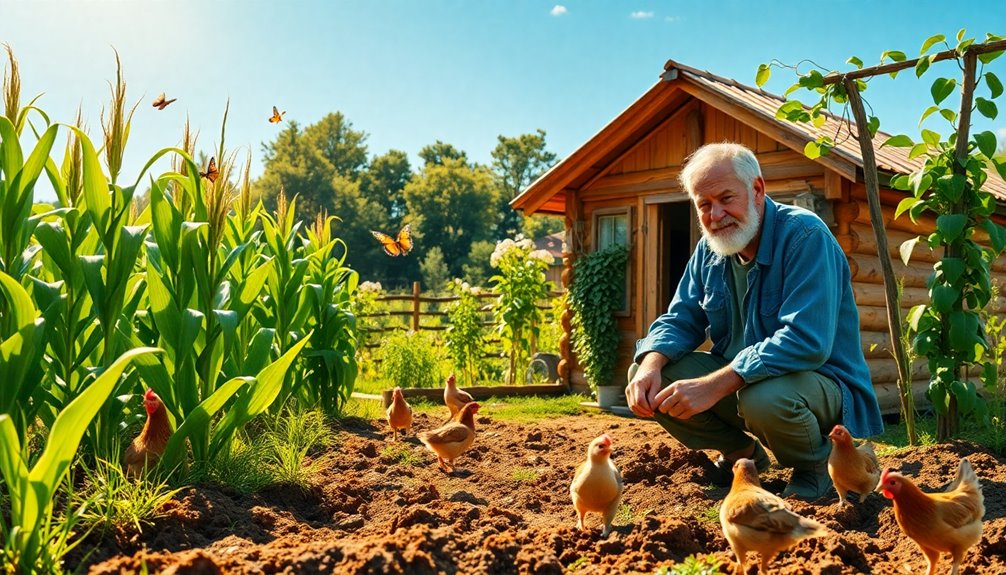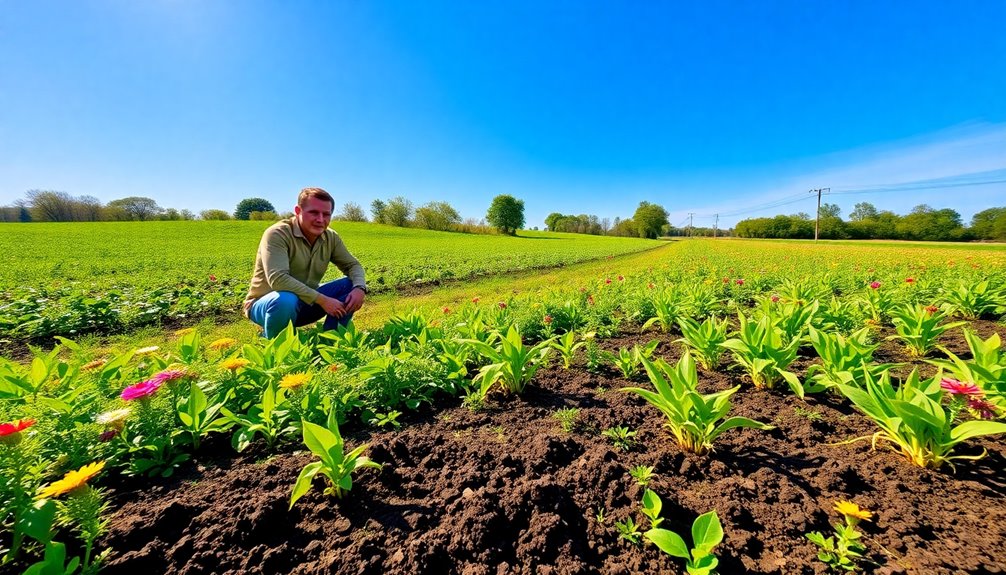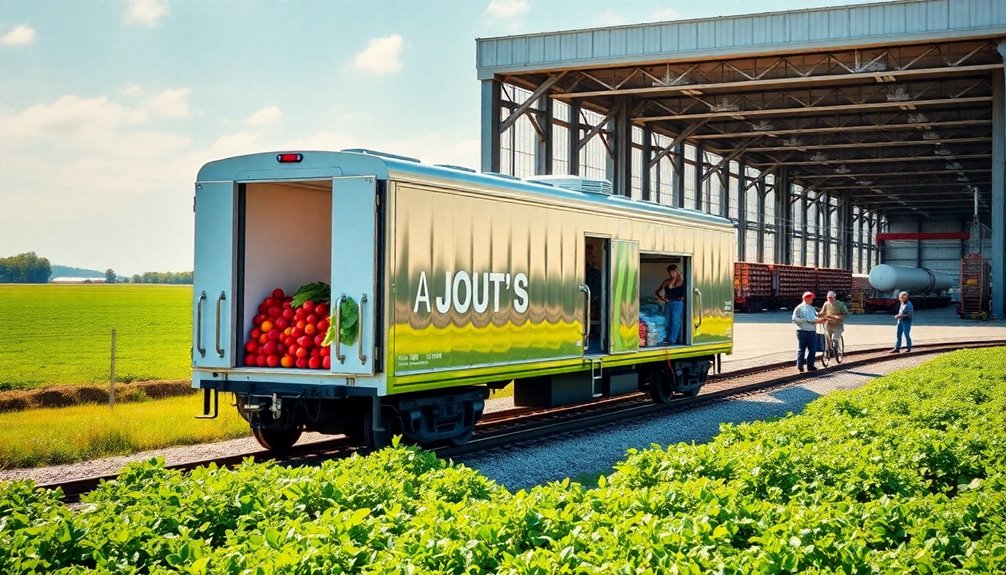Starting a small farm with no money is achievable with smart planning. Focus on one to three acres and consider techniques like vertical farming or container gardening to minimize land needs. Assess your resources and community for support, while exploring low-cost livestock options like chickens or rabbits. Embrace sustainable practices to reduce costs long-term. With a lean budget, you can grow gradually and efficiently. There's much more to uncover about maximizing your success with limited funds.
Key Takeaways
- Start small with one to three acres, utilizing methods like vertical farming and container gardening to minimize land needs and costs.
- Assess local resources and unused spaces to maximize production without significant investment, and consider communal farming arrangements.
- Choose low-cost livestock such as chickens or rabbits, which require minimal space and provide both meat and eggs for returns.
- Implement sustainable practices like crop rotation and integrated pest management to reduce reliance on costly synthetic inputs and improve yields.
- Create a detailed budget, explore grants or loans, and reinvest profits gradually to support sustainable growth and expansion of your farming operation.
Starting Small: Minimizing Initial Investment

When you're venturing into farming on a budget, starting small can make all the difference. A plot of just one to three acres can be incredibly productive with smart planning. Consider vertical farming or container gardening to maximize your space, or explore aquaponics and hydroponics to reduce land needs. Microgreens are another excellent option for small indoor spaces. Implementing sustainable living practices can also help minimize costs and enhance overall efficiency in your farming operations. Additionally, crop rotation can improve soil health and yield in a small farming setup.
Utilizing sustainable practices also helps minimize costs. Organic farming and natural pest control methods can save you money on inputs. Incorporating low-input crops like legumes and drought-resistant varieties that thrive in your region can significantly enhance your yield.
When it comes to equipment, stick to basic tools and consider second-hand options.
Initiate your farming journey with manageable steps, and you'll set the stage for future growth.
Assessing Resources: Making the Most of What You Have
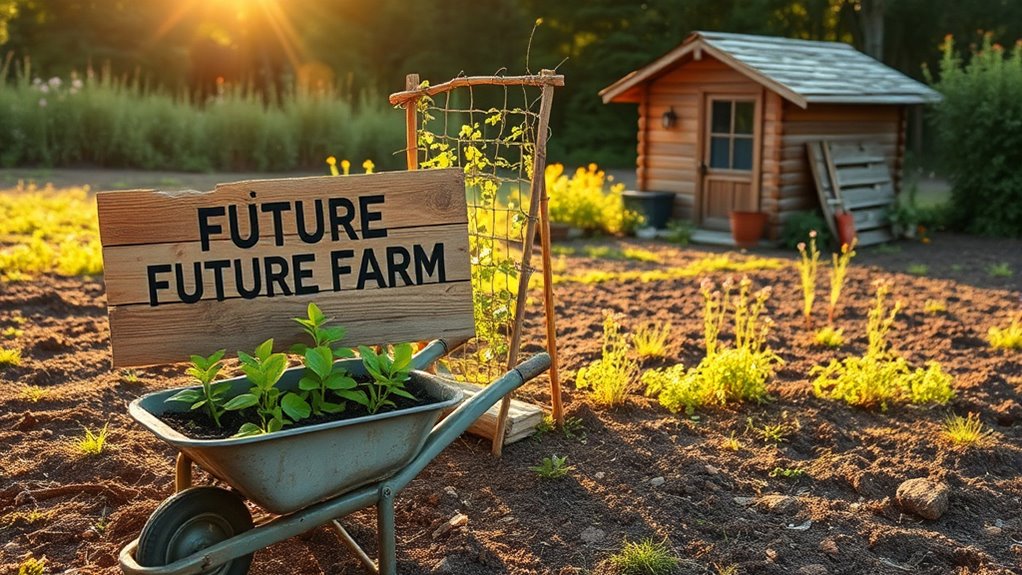
Starting small lays a solid foundation for your farming journey, but assessing your resources takes it a step further.
Consider leasing land or forming communal arrangements to access farmland without hefty costs. Explore unused spaces in your area for farming opportunities. Assess the quality of the land and soil to determine what crops or livestock thrive best.
Look at the tools you already own; repurpose and adapt them to save money. Engage with your community to learn about local resources and market demands.
Don't underestimate your skills—your existing knowledge can significantly cut costs. By adopting innovative techniques and collaborating with others, you can maximize what you have and set your farm up for success.
Embracing Sustainable Practices for Long-Term Success
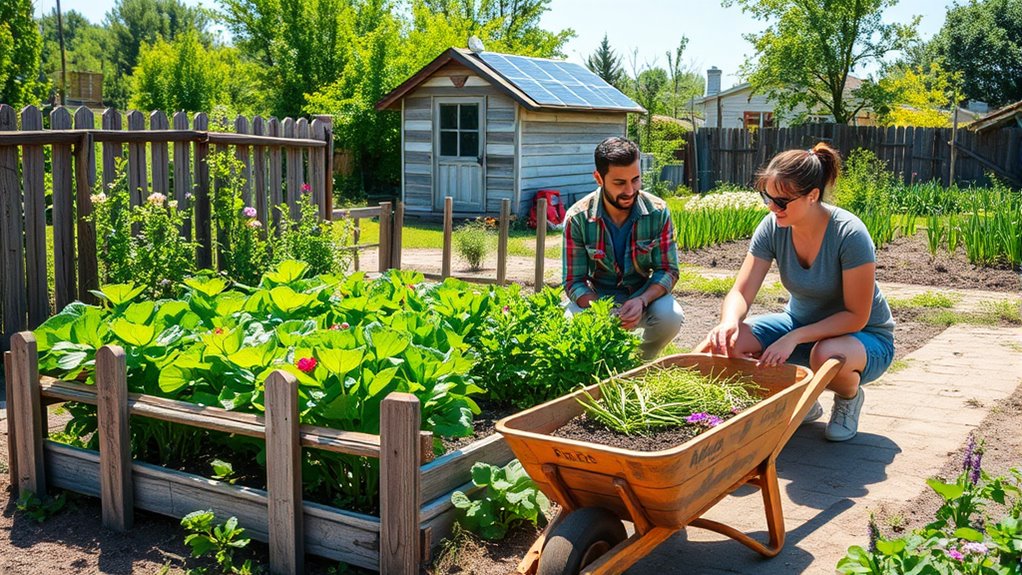
Embracing sustainable practices not only enhances your farm's productivity but also ensures its long-term viability.
Start by implementing crop rotation and diversification to improve soil fertility and increase yields while minimizing pest issues. This approach reduces your reliance on synthetic fertilizers and pesticides, saving you money.
Implementing crop rotation and diversification enhances soil fertility, boosts yields, and cuts costs on synthetic inputs.
Consider integrated pest management (IPM), encouraging natural predators and using physical barriers to control pests sustainably.
Utilize cover crops and conservation tillage to prevent soil erosion, suppress weeds, and enhance water retention.
Lastly, explore agroforestry and permaculture for added income streams and improved resilience.
Engaging With Your Community for Support and Resources
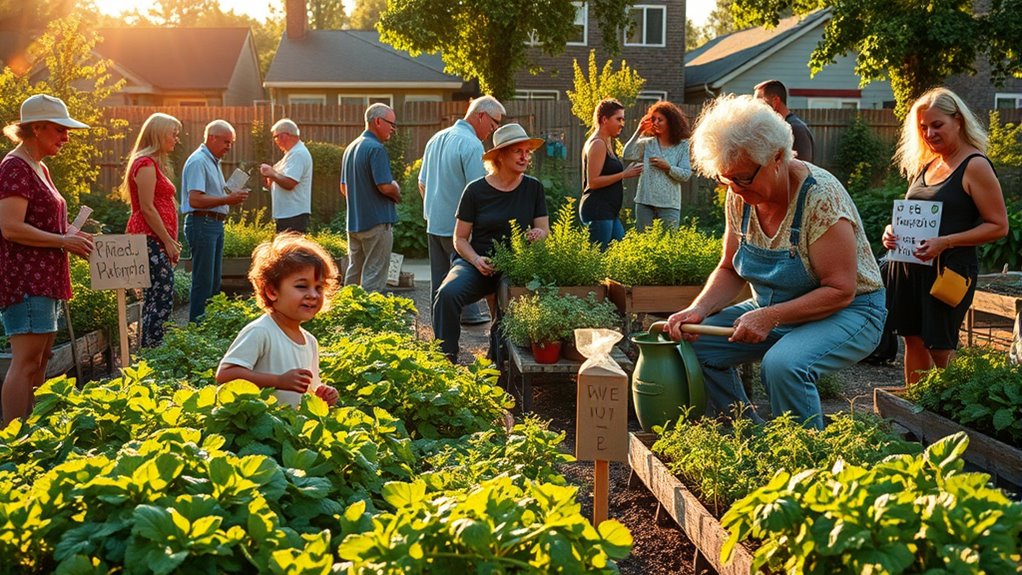
Building a successful small farm goes hand in hand with engaging your community. Attend local meetings to understand neighborhood needs and build trust.
Forge relationships with community leaders to promote cooperation and support for your farm. Host events like farm tours and volunteer days to invite community involvement and showcase your efforts.
Address concerns openly to prevent resistance and maintain goodwill. Creating a welcoming environment with open access policies encourages a sense of ownership among residents.
Involve diverse leadership to reflect community interests, and provide affordable produce to meet local demands. Additionally, consider collaborating with local beekeepers and beekeeping to enhance agricultural practices and promote pollinator health in your area.
Choosing Low-Cost Livestock for Beginners

When you're new to farming, selecting low-cost livestock can make all the difference in launching your venture on a budget.
Chickens are a fantastic choice, as they provide both eggs and meat while requiring minimal space.
Chickens are an ideal option for beginner farmers, offering both eggs and meat with little space needed.
Rabbits are another great option; they grow quickly and thrive in small areas.
Quail, small and hardy, can also yield eggs and meat.
If you have more space, ducks are excellent for free-range farming, offering both eggs and meat.
Goats are versatile, needing less space and providing milk and meat.
Consider the ongoing costs like feed, care, and shelter, but with the right choices, you can start your farming journey without breaking the bank.
Exploring Financial Assistance Options for New Farmers

Starting a small farm on a budget can be challenging, but financial assistance options are available to help ease the burden. You can explore USDA Farm Service Agency loans, which provide support for family-size farmers struggling to access commercial credit.
If you're a beginning farmer, consider the Beginning Farmer/Rancher Loans or Microloans, which offer simplified applications up to $50,000. State programs, like the Next Generation Farmer Loan Program, can provide lower interest rates and additional assistance.
Don't overlook local partnerships and community development programs that may offer grants or tax incentives. By leveraging these resources, you can secure the funding necessary to start your farming journey without overwhelming financial stress.
Utilizing Natural Resources to Lower Operational Costs
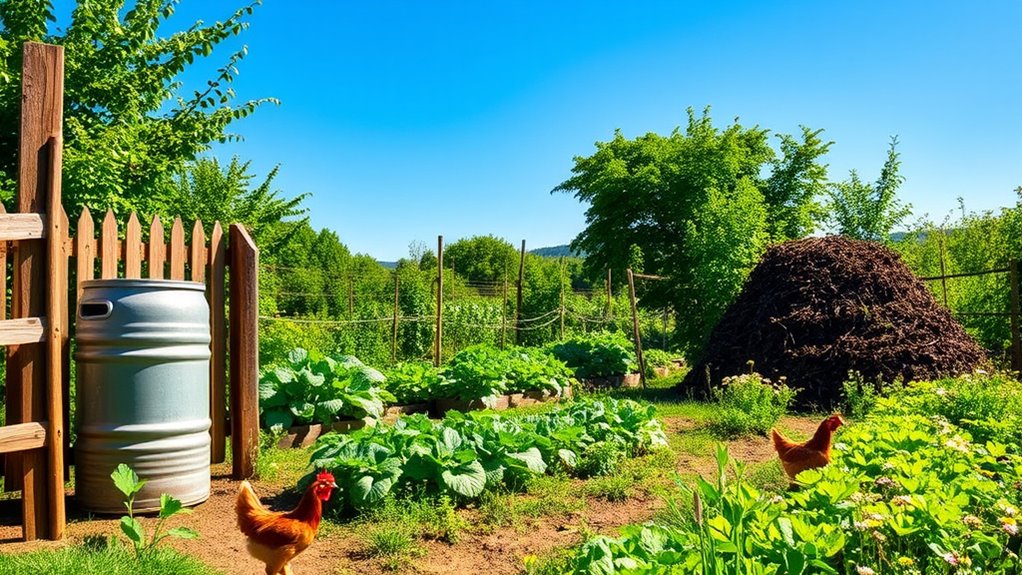
Utilizing natural resources effectively can significantly lower your operational costs while enhancing your farm's sustainability. Start by conducting soil tests to understand nutrient levels and choose crops that thrive in your soil type, minimizing expensive amendments.
Effectively using natural resources can reduce costs and improve sustainability by optimizing soil health and crop selection.
Implement soil conservation practices like contour farming to prevent erosion. Use organic materials, such as compost and manure, to maintain soil health without synthetic fertilizers.
For water efficiency, install irrigation systems that target roots and collect rainwater for irrigation. Consider drought-resistant crops and techniques like mulching to conserve moisture.
Additionally, harness renewable energy sources like solar panels to power your operations, reducing reliance on external energy supplies.
Implementing Waste Management Strategies for Sustainability
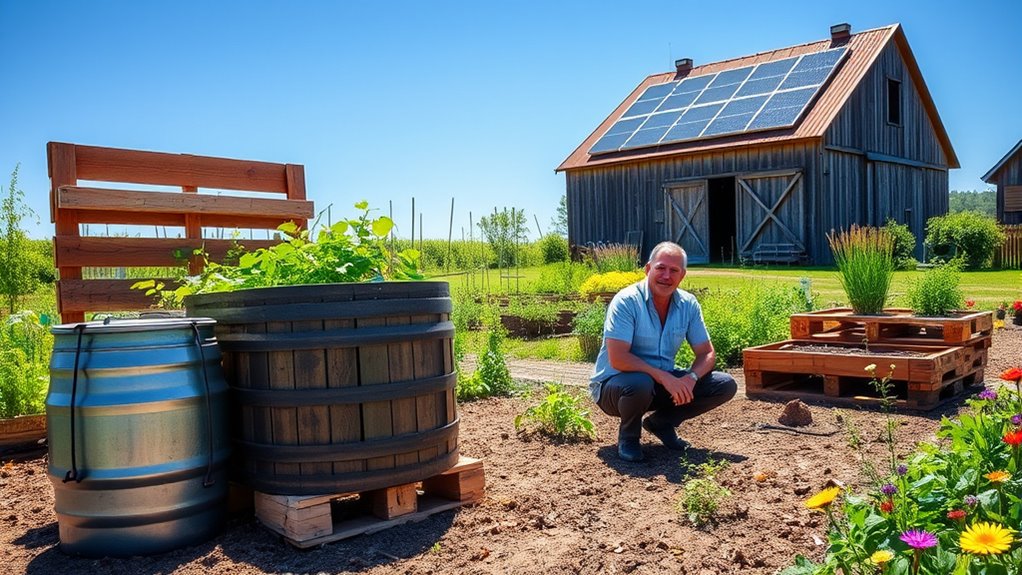
Implementing effective waste management strategies not only boosts your farm's sustainability but also helps cut costs.
Start by composting your organic waste, like crop residues and kitchen scraps. This process enriches your soil and reduces reliance on synthetic fertilizers. Balance "browns" and "greens" for optimal results. Incorporating nutrient-rich ingredients such as kitchen scraps can enhance the composting process and provide essential nutrients for your crops. Additionally, adopting sustainable practices like ethical sourcing can further improve the quality of your produce.
Next, focus on recycling and reusing materials—repurpose old pallets for fencing or containers for storage, which can save you money and minimize waste.
Ensure you dispose of hazardous waste, like pesticides, following local guidelines to protect the environment.
Lastly, reduce packaging waste by opting for eco-friendly materials and selling products with minimal packaging. These practices not only benefit your farm's bottom line but also contribute to a healthier planet. Additionally, embracing global culinary delights can inspire the use of diverse crops and promote sustainability through innovative cooking practices.
Gradual Expansion: Growing Your Farm Responsibly
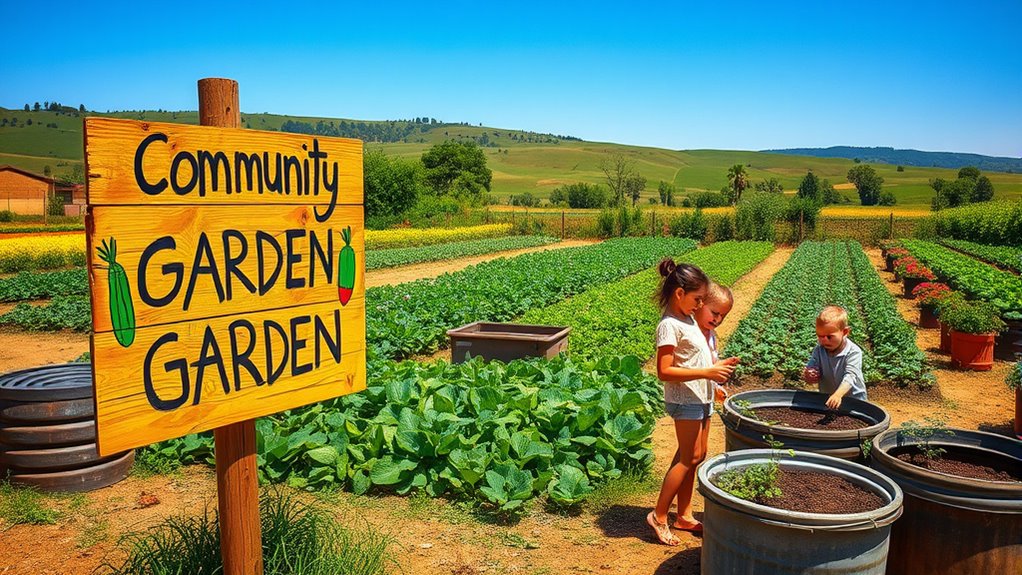
Successfully managing waste on your farm sets a solid foundation for responsible growth.
To expand gradually, start with an initial assessment of your resources—land, tools, and potential partnerships. Set SMART goals for your farm's expansion to keep your progress on track.
Conduct market research to understand local demand and competition, tailoring your products accordingly. Create a detailed budget and explore funding options while developing risk management strategies to handle setbacks.
Begin small with low-cost crops or animals, utilizing available space like backyards. Engage with your community for support and implement eco-friendly practices.
As you gain experience, incrementally increase production, diversify offerings, and invest in necessary infrastructure to enhance your farm sustainably.
Frequently Asked Questions
What Are the Best Crops to Start With on a Small Budget?
When you're starting out on a small budget, choose crops that are easy and quick to grow.
Peas and green beans are great options, as they're inexpensive and yield well.
Radishes can be harvested in just 20 days, providing fast results.
Squash and potatoes require little maintenance and can produce abundantly.
How Can I Find Affordable Land to Lease for Farming?
To find affordable land to lease for farming, start by connecting with local farming communities; they often have leads on available properties.
Consider government resources like the USDA's Transition Incentive Program for assistance.
Look for unused or underutilized land in your area, and don't hesitate to negotiate terms with landowners.
Offering non-monetary benefits, such as land improvement or skill sharing, can make your proposal more attractive and affordable.
What Types of Equipment Can I Borrow or Rent Initially?
You can start by renting essential farm equipment like tractors, harvesting machines, and irrigation systems. This approach helps you manage costs while accessing necessary tools.
Additionally, consider borrowing specialized equipment such as attachments for tractors, excavators, and generators when needed.
Collaborating with local farmers through shared equipment programs can also be beneficial. Engaging in community initiatives allows you to maximize resources without a hefty investment in purchasing new gear.
How Do I Market My Farm Products Without Spending Much?
Ever wondered how to make your farm products fly off the shelves without breaking the bank?
Start by harnessing social media to showcase your goods and connect with customers.
Attend local markets to build relationships and visibility.
Collaborate with nearby businesses to expand your reach, and encourage happy customers to spread the word.
Utilize free online platforms for promotion, and don't underestimate the power of engaging content to attract attention and interest.
Are There Online Resources for Beginner Farmers Seeking Advice?
Yes, there are plenty of online resources for beginner farmers like you.
Check out the USDA New Farmers Website for federal programs and grants.
Farm Answers offers tools specifically designed for new farmers.
The Farmland Information Center can help you find land and access capital.
Additionally, ATTRA provides webinars on sustainable practices, while the Northeast SARE offers grants and education tailored to your needs.
Utilize these resources to kickstart your farming journey!
Conclusion
Starting a small farm with little to no money might seem daunting, but it's absolutely achievable with the right mindset and strategies. You might worry that without funds, your dreams are out of reach, but remember that resourcefulness and community engagement can open doors. By leveraging what you already have and gradually expanding, you're setting yourself up for sustainable success. Embrace the journey, and you'll find that every small step counts toward building the farm you envision.



